Otoplasty in Koh Samui
Search and Compare the Best Clinics and Doctors at the Lowest Prices for Otoplasty in Koh Samui

Find the best clinics for Otoplasty in Koh Samui
With Medijump you can browse 1 facilities offering Otoplasty procedures in Koh Samui. The cheapest price available is $556 in Bangkok
Otoplasty in Thailand
Price: $ 556
Otoplasty in Bangkok
Price: $ 556
Otoplasty in Phuket
Price: $ 834
Egypt offers the best prices Worldwide
Price: $ 100
Thitiwat Clinic -The leader Aesthetic Surgery & Skin Laser Center, located in Laem Sor, Koh Samui, Thailand offers patients Otoplasty procedures among its total of 22 available procedures, across 3 different specialties. Currently, there's no pricing information for Otoplasty procedures at Thitiwat Clinic -The leader Aesthetic Surgery & Skin Laser Center, as all prices are available on request only, whilst the national average price is approximately $1,276. There is currently a lack of information available on the specialists practicing at the Clinic, and they are accredited by ASPS - American Society of Plastic Surgeons
Compare Before & After Photos of _procedure_photos.phpOtoplasty
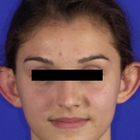
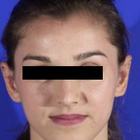
Front view
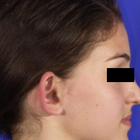
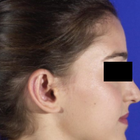
Full-side view


Front view

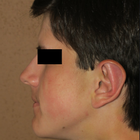
Full-side view
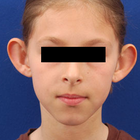
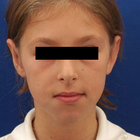
Front view
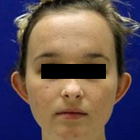
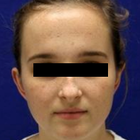
Front view
WHY US?
At Medijump, we're making medical easy. You can search, compare, discuss, and book your medical all in one place. We open the door to the best medical providers worldwide, saving you time and energy along the way, and it's all for FREE, no hidden fees, and no price markups guaranteed. So what are you waiting for?

Free

Best Price

Widest Selection

Risk-Free
What you need to know about Otoplasty in Koh Samui

Otoplasty, also referred to as cosmetic ear surgery, is a type of cosmetic procedure to change the size, shape, or position of the ear. It is performed on the visible part of the outer ear, called auricle. Some people choose to have the surgery to correct odd-shaped ears due to an injury or birth defect. Others have it because they are concerned with how their ears protrude too far from their head. Otoplasty can be performed at any age after the ears have reached their full size, generally after age 5. In some cases, the surgery may be done as early as age 3.
There are several types of otoplasty. The following are the most common:
- Ear pinning draws the ears closer to the head. It is usually done on people whose ears stick out too far from their head.
- Ear augmentation is ideal for individuals whose ears are small or have not completely developed. This type of otoplasty can increase the size of the outer ear.
- Ear reduction is usually done on people with macrotia, which is a condition when the ears are larger than normal. Otoplasty can reduce the size of the ears.
What does a Otoplasty Procedure Involve?
Otoplasty is typically carried out under local anesthesia with a sedative, so you will be awake but you will not feel any pain. In some cases, general anesthesia may be used, typically for younger children.
The techniques used by your surgeon vary based on the type of otoplasty you are having. In general, your surgeon makes an incision either within the inner creases of your ears or on the backs of your ears. Then, your surgeon manipulates the tissue of the ear, which may include removal of cartilage or skin, grafting of cartilage to the ear, or folding and shaping of cartilage using permanent stitches. Once your surgeon is done correcting the shape, size, and position of your ears, the incisions are closed with stitches.
How Long Should I Stay in Koh Samui for a Otoplasty Procedure?
Otoplasty can take between 1 and 3 hours to perform, depending on the complexity and the specifics of the procedure. It is typically done as an outpatient procedure, which means you can leave the hospital on the same day. It is recommended that you stay in Koh Samui for 7 more days for follow-up checkups and removal of stitches.
What's the Recovery Time for Otoplasty Procedures in Koh Samui?
The recovery period may vary from one person to another. You may experience numbness for several weeks, and mild bruising for about 2 weeks. For several months, your ears may feel stiff and sore.
You should be able to go back to work and resume your normal activities, including exercise, within one to two weeks after surgery. Physical contact sports, such as rugby, football, or judo, should be avoided for at least 3 months. You should also avoid swimming for up to 8 weeks following your otoplasty.
What sort of Aftercare is Required for Otoplasty Procedures in Koh Samui?
Your surgeon will provide post-operative instructions. Make sure to follow the instructions carefully to promote smooth and quick recovery. You should rest with your head elevated on 2-3 pillows to minimize swelling. It is recommended that you eat a light, soft, and cool diet for several days. Take pain medication as prescribed by your doctor. Avoid sleeping on your side or rub the incisions to keep pressure off your ears. Consider wearing shirts with loose-fitting collars or button-down shirts.
What's the Success Rate of Otoplasty Procedures in Koh Samui?
Otoplasty is a safe and effective procedure, with high satisfaction rates. More than 90% of people who had the procedure claimed to be extremely happy with the results. Note that it may take some time for the result to be fully visible.
While it is a safe procedure, you still need to be aware of possible risks and complications that otoplasty carries. These include bleeding, hematoma formation, infection of the skin, infection of the cartilage of the ear, permanent or temporary numbness around the affected area, scar or keloid formation, unfavorable results, prolonged pain, narrowing of the external ear canal, impaired healing, changes in skin sensation, asymmetry, and overcorrection.
Are there Alternatives to Otoplasty Procedures in Koh Samui?
There are not many viable alternatives to otoplasty as of yet. One of the most popular alternatives is nonsurgical otoplasty, which does not require any incisions. The procedure uses special sutures to pin the ears back and achieve a more symmetrical look. These sutures are woven into the ears and will remain in place permanently. They are also virtually invisible, so the results will look natural.
For babies under three months old with prominent ears, ear-molds can be taped to their ears to reshape the ears without surgery. This type of treatment typically takes about six to eight weeks.
What Should You Expect Before and After the Procedure
Before otoplasty, you may have prominent or large ears or other deformity caused by an injury or birth defect that bothers you. Some people also feel self-conscious and embarrassed by the shape, size, and position of their ears. After the procedure, your ears will be corrected. Small or underdeveloped ears will be augmented to increase the size, the size of large ears will be reduced, and prominent ears will be drawn closer to the head. Your appearance will improve and you may feel more confident.
Whilst the information presented here has been accurately sourced and verified by a medical professional for its accuracy, it is still advised to consult with your doctor before pursuing a medical treatment at one of the listed medical providers
No Time?
Tell us what you're looking for and we'll reachout to the top clinics all at once
Enquire Now

Popular Procedures in Koh Samui
Prices Start From $28

Prices Start From $1,945

Prices Start From $120

Prices Start From $275

Recommended Medical Centers in Koh Samui for Otoplasty

- Interpreter services
- Translation service
- Religious facilities
- Medical records transfer
- Medical travel insurance
- Health insurance coordination
- TV in the room
- Safe in the room
- Phone in the room
- Private rooms for patients available

- Interpreter services
- Translation service
- Religious facilities
- Medical records transfer
- Medical travel insurance
- Health insurance coordination
- TV in the room
- Safe in the room
- Phone in the room
- Private rooms for patients available

- Interpreter services
- Translation service
- Religious facilities
- Medical records transfer
- Medical travel insurance
- Health insurance coordination
- TV in the room
- Safe in the room
- Phone in the room
- Private rooms for patients available

- Interpreter services
- Translation service
- Religious facilities
- Medical records transfer
- Medical travel insurance
- Health insurance coordination
- TV in the room
- Safe in the room
- Phone in the room
- Private rooms for patients available

- Interpreter services
- Translation service
- Religious facilities
- Medical records transfer
- Medical travel insurance
- Health insurance coordination
- TV in the room
- Safe in the room
- Phone in the room
- Private rooms for patients available

- Interpreter services
- Translation service
- Religious facilities
- Medical records transfer
- Medical travel insurance
- Health insurance coordination
- TV in the room
- Safe in the room
- Phone in the room
- Private rooms for patients available

- Interpreter services
- Translation service
- Religious facilities
- Medical records transfer
- Medical travel insurance
- Health insurance coordination
- TV in the room
- Safe in the room
- Phone in the room
- Private rooms for patients available

- Interpreter services
- Translation service
- Religious facilities
- Medical records transfer
- Medical travel insurance
- Health insurance coordination
- TV in the room
- Safe in the room
- Phone in the room
- Private rooms for patients available

- Interpreter services
- Translation service
- Religious facilities
- Medical records transfer
- Medical travel insurance
- Health insurance coordination
- TV in the room
- Safe in the room
- Phone in the room
- Private rooms for patients available

- Interpreter services
- Translation service
- Religious facilities
- Medical records transfer
- Medical travel insurance
- Health insurance coordination
- TV in the room
- Safe in the room
- Phone in the room
- Private rooms for patients available
Otoplasty in and around Koh Samui
About Koh Samui
Koh Samui is the second-largest island in the Gulf of Thailand. Referred to as Samui, it was once a “backpacker’s paradise”. It has a bounty of natural wonders as well as man-made attractions such as the mummified monks and the glorious Buddha temples.
The idyllic atmosphere of Koh Samui makes it a perfect destination for both physical and mental wellbeing. It has become a preferred destination for medical tourism in the last few years. Visitors love the location and combine their holidays with medical and spa treatments.
The island has several sophisticated and state-of-art international hospitals such as the Bangkok Hospital, Samui, Bandon International Hospital, Samui International Hospital, and Thai International Hospital, Samui. These hospitals offer affordable and timely medical services to tourists who mainly come to undergo Cosmetic surgeries, Dental Aesthetic procedures, and Sex Reassignment surgeries. Such procedures when carried out in Koh Samui cost 20% to 25% less than the cost of the same treatments in their home countries.
With an eye on the possible growth within the realm of medical tourism, these hospitals are actively broadening the array of medical services they offer. They now furnish other types of procedures including, but not limited to, cardiac surgery, orthopedic surgery, and ophthalmic surgery.
In addition to these extended services, they have a roster of highly competent doctors on hand. These medical professionals are clearly proficient in English, thereby effectively ensuring smooth and easy communication with patients arriving from different parts of the world.
Popular Areas in Koh Samui
Koh Samui is home to many amazing beaches, locations, temples, and markets and some of the major and popular attractions of the island are:
- Ang Thong Marine Park – Ang Thong Marine Park is a group of 42 tiny lush green islands with lofty limestone cliffs, crystal clear beaches, fertile mangroves, waterfalls, hidden coves, and lakes. It is one of the most popular tourist destinations in Koh Samui, and it is easy to see why. The scenery is simply breathtaking.
- Wat Phra Yai – Wat Phra Yai, also known as the Big Buddha Temple, is one of the most iconic landmarks in Koh Samui. The golden-colored, 12-meter tall Buddha statue is hard to miss, and it is a popular pilgrimage site for both locals and tourists.
- Wat Plai Laem – Wat Plai Laem is an active Buddhist temple that is known for its beautiful architecture and its 18-arm image of Guanyin, the Goddess of Mercy and Compassion. It is a popular place to visit for both religious and cultural reasons.
- Na Muang Waterfall – It represents a set of two magnificent waterfalls. These lie about 7.5 miles southeast to Nathon Bay in inland.
- Chaweng and Lamai Beach – Are the two most popular beaches on the island. Chaweng beach is on the east coast of Samui and is known for its nightlife. Lamai beach has a more laid-back atmosphere, but it still has a variety of accommodation, dining & shopping choices, luxurious spas, and tourist spots.
Koh Samui’s other attractions include Hin Ta and Hin Yai, Koh Phangan island, Fisherman’s Village Bophut, Mummy Monk at Wat Khunaram, and the Secret Buddha Garden. Full Moon Party is an all-night beach party held on the Koh Phangan island on full moon day.
Weather and Climate in Phuket
Nestled in a tropical climate, Koh Samui basks in hot and humid weather that extends throughout the year. The humidity level typically straddles between 70 and 85 percent, creating a warm atmosphere indicative of tropical locales. Meanwhile, the average temperature usually hovers around a cosy 28 degrees Celsius.
The island ushers in three distinctive seasons, specifically, hot, dry, and rainy, each of them bringing a unique texture to the overall climate.
- Hot Season is between March and September. The hottest period is March and April when the temperature is 30 degrees Celsius and above. From May to September, it’s like a mini monsoon season with bright sunny days and light showers in the evening.
- Dry Season runs from December to February. The weather is pleasant with light cool winds. The sea is balmy and tourists flock the region during this season.
- Rainy Season is between September and November and the island faces its maximum rainfall with unpredictable weather and rough seas.
Getting Around in Koh Samui
Koh Samui’s airport is a private airport built by Bangkok Airways. It is still the main operator of flights to Samui. Flights to and from Bangkok operate almost every hour. It operates domestic flights to Phuket, Pattaya, and Chiang Mai, and international flights to Singapore, Kuala Lumpur, and Hong Kong every day. Thai Airways to flies between Bangkok and Ko Samui.
Besides Bangkok and Thai Airways, Berjaya Air & Firefly of Malaysia and Silk Air of Singapore also fly to Samui Airport. Air Asia offers a special ‘Island Transfer’ which comprises a flight from Bangkok to Surat Thani or Nakhon Si Thammarat, road travel to the port, and a ferry ride to Koh Samui.
Combined bus and ferry service from Surat Thani rail station or Surat Thani Airport are other options to reach Samui.
Moving around Koh Samui is easy as it is a small island and there are many transport options within Samui. They are songthaews, motorbikes, taxis, and cars and there are no tuk-tuks or buses.
- Songthaews – They are mini pick-up trucks that can accommodate 8-10 adults. They circle the main ring road of Samui and travel through the popular beach towns. The drivers pick you up from anywhere on the road.
- Metered Taxis – You can find them everywhere in the town. Despite having a meter, the drivers don’t use them. You need to bargain and fix a fare before you start your journey.
- Rent a Car – There are major car rental chains to book a car and they have a good collection of vehicles, but can be pricey. Then there are local car operators which are cheaper but can be unreliable.
- Scooter-taxis –These are the cheapest and quickest mode of transport.
Tourist Visas in Koh Samui
Visa Exemption or Visa Waiver Entry – Under a bilateral agreement, Thailand exempts nationals from 55 countries including the UK, USA, and many European countries from obtaining a tourist visa. The only condition is that tourists must have a passport that is valid for at least six months. They can get an arrival stamp on their passports, and stay in the country for a period of 30 days. They need not pay any visa fees, as it is not a visa on arrival rather just an entry stamp.
Visa on Arrival – Nationals from 24 countries like China and India with a valid Passport not expiring before six months, can get a visa on arrival at the airport. The visa permits them a stay of 15 days. There are designated immigration counters at the airport for issuing the visa.
Here are some additional tips for tourists applying for a visa on arrival in Thailand:
- Make sure that you have all of the required documents, including a valid passport, a return flight ticket, and proof of funds.
- Be prepared to pay the visa fee, which is 2,000 Thai baht.
- Be prepared to answer questions about your trip and your purpose for visiting Thailand.
Additional Information
- The main currency of exchange is the Thai Baht. One US dollar is worth about 34.5559 Thai Baht as of 2023. You can also use debit and credit cards.
- Most of the major banks operate in Samui Island. They exchange all major currencies and traveller’s cheques.
- You can find ATMs everywhere in Koh Samui. They accept both local as well as international debit cards. However, they charge you a small transactional fee when you withdraw from your country’s bank account.
- The locals of Koh Samui speak Thai – the official language of Thailand. People also understand and speak English to a certain extent, since the island is a famous tourist destination.
- Buddhism and reverence to the monarchy are striking aspects of Samui culture. It has a large Buddhist Thai population along with a traditional Muslim fishermen community.
- Important public holidays include:
- The Chinese New Year in February
- The Thai New Year (Songkran) in April
- The Festival of Lights (Loi Krathong) in November
- Christmas and New Year
Popular Searches
- Plastic Surgery in Thailand
- Dental Implants in Thailand
- Hair Transplant in Thailand
- Breast Augmentation Thailand
- Gastric Sleeve in Thailand
- Gender Reassignment Surgery in Thailand
- Laser Hair Removal in Bangkok
- Botox in Bangkok
- Dermatology in Bangkok
- Breast Augmentation in Bangkok
- Coolsculpting in Bangkok
- Veneers in Turkey
- Hair Transplant in Turkey
- Rhinoplasty in Turkey
- Stem Cell Therapy in Mexico
- Rhinoplasty in Mexico
- Liposuction in Mexico
- Coolsculpting in Tijuana
- Rhinoplasty in Korea
- Scar Removal in Korea
- Gastric Sleeve in Turkey
- Bone Marrow Transplant in India
- Invisalign in Malaysia
- Plastic Surgery in the Dominican Republic
- Tummy Tuck in the Dominican Republic
- Plastic and Cosmetic Surgery in Poland
- Rhinoplasty in Poland
- Hair Implant in Poland
- Dental Implants in Poland
- IVF in Turkey
